Key takeaways:
- Emotional eating often serves as a coping mechanism for stress, loneliness, and anxiety, masking deeper emotional issues.
- Mindfulness, healthier emotional outlets, and building a support system are effective strategies to overcome emotional eating.
- Encouraging children to express feelings, recognize hunger cues, and develop coping strategies can help them manage emotional eating.
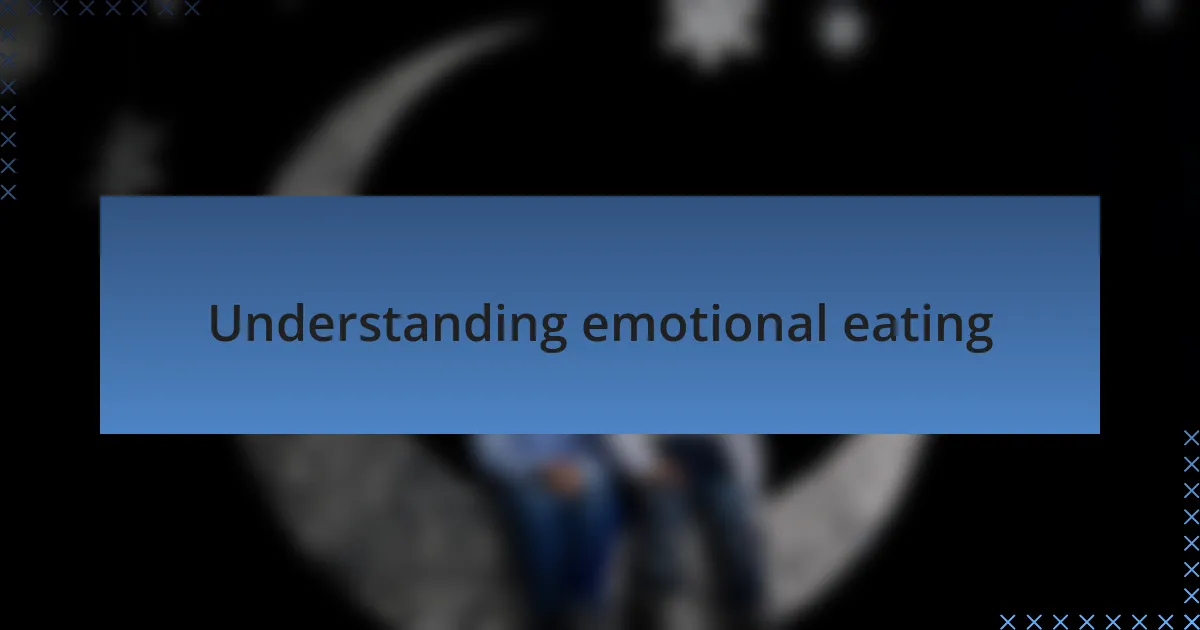
Understanding emotional eating
Emotional eating often arises when we use food as a way to cope with our feelings, whether it’s stress, sadness, or even boredom. I remember one particularly challenging week, feeling overwhelmed with responsibilities and instead of processing those emotions, I found myself reaching for the cookie jar more often than usual. Can you relate to that moment when food seems to fill the void but leaves you feeling emptier?
Many people don’t realize that emotional eating can become a cycle, where each act of indulgence shifts us further from addressing the root of our feelings. I’ve experienced those moments where, after a binge, I not only felt physically uncomfortable but also guilt-ridden. It begs the question: Why do we seek comfort in food when it often brings us more distress?
Understanding emotional eating requires a gentle reflection on our triggers and habits. I’ve often asked myself what emotions I was really trying to hide behind that extra slice of cake. Digging deeper into those feelings has been a vital part of my journey, allowing me to confront my emotions rather than mask them with temporary satisfaction from food.
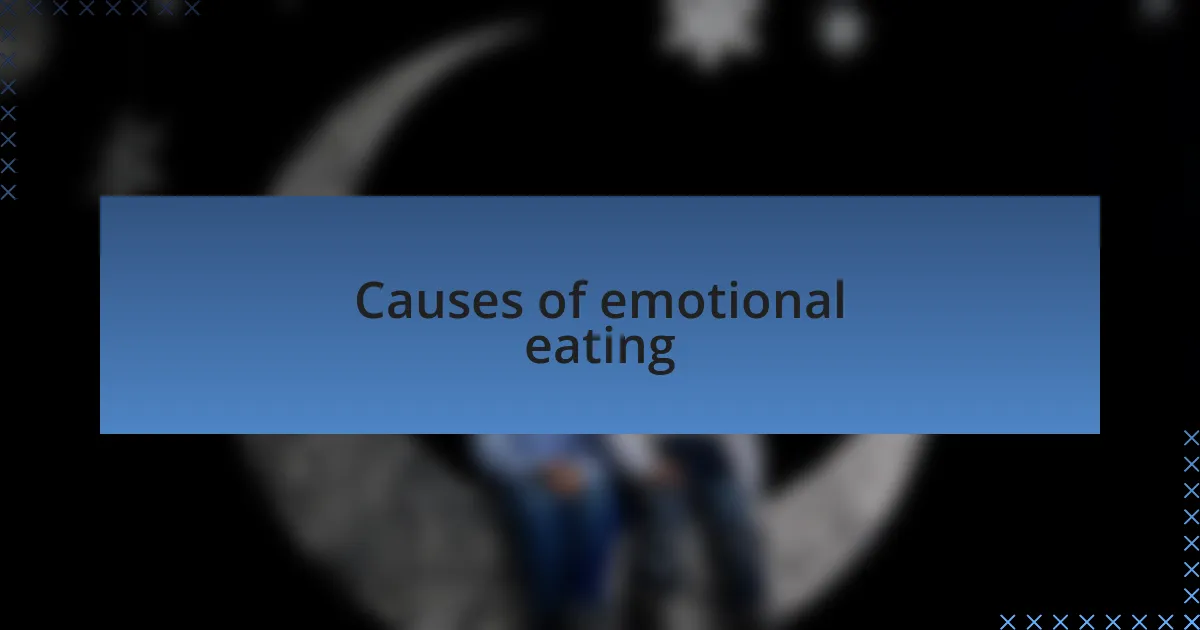
Causes of emotional eating
Many factors can contribute to emotional eating, including loneliness and anxiety. I recall a time when I felt isolated, surrounded by friends yet unable to connect deeply. In those moments, food became my companion, a quick remedy that masked my loneliness but never truly filled the void.
Stress is another common trigger, often leading us to seek comfort in food as a distraction. I vividly remember during exam season in school, the pressure felt overwhelming. Instead of studying, I found myself mindlessly snacking on chips, attempting to escape the mounting stress, which only compounded my anxiety when I realized I was avoiding my responsibilities.
Childhood experiences can also shape our relationship with food. Growing up, I noticed how celebrations often revolved around meals, making it difficult to detach food from emotions. I often find myself wondering: how many of us were taught to equate love and comfort with a plate of food? Recognizing these patterns has been key in understanding my emotional eating habits and what lies beneath them.

Strategies to overcome emotional eating
One effective strategy to overcome emotional eating is developing mindfulness around food choices. I often find that pausing for a moment before reaching for a snack can change my response entirely. Asking myself questions like, “Am I truly hungry, or am I trying to escape my feelings?” has shifted my perspective. This simple act of self-reflection has helped me make more conscious decisions and recognize when I’m eating for comfort instead of nourishment.
Another approach that has worked wonders for me is finding healthier outlets for my emotions. When stress hits, instead of diving into the kitchen, I’ve started going for brisk walks or engaging in creative activities like painting. These alternatives allow me to channel my feelings in a positive direction, making it easier to cope without turning to food. What if we could replace those moments of emotional eating with a more fulfilling hobby or a physical activity?
Connecting with a support system is also crucial. Sharing my struggles with friends led to some surprising revelations. Not only did they provide encouragement, but many of them also shared their own experiences with emotional eating. I realized that I wasn’t alone in this journey, and it made it easier to address my feelings openly. Engaging in supportive conversations has often been the key to unlocking healthier patterns in my relationship with food.
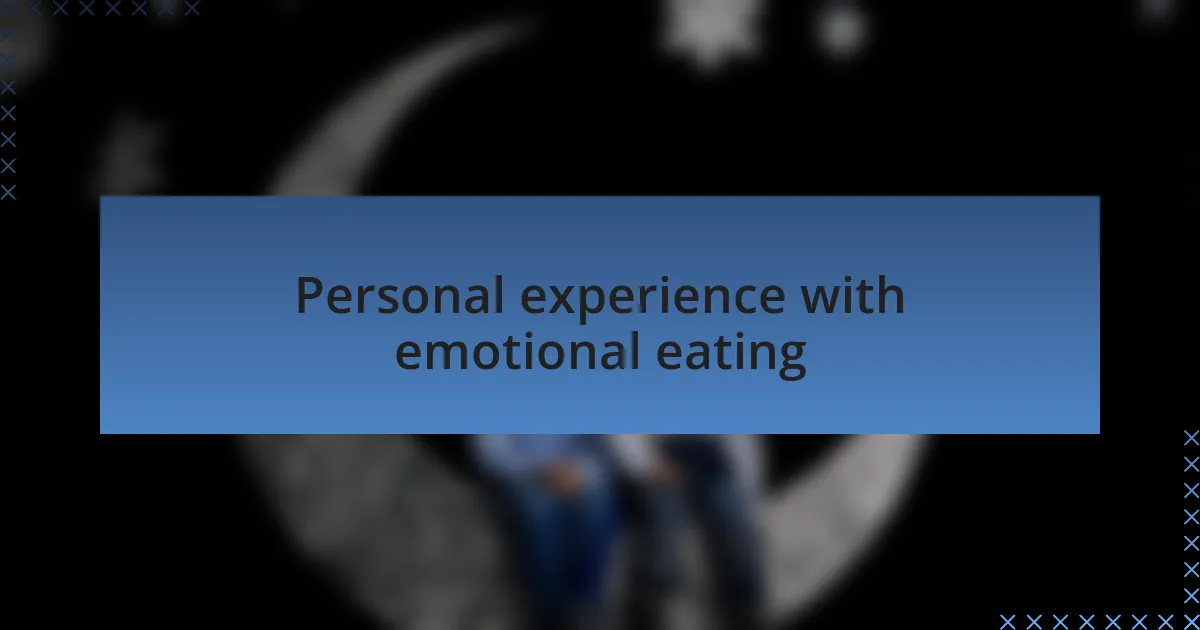
Personal experience with emotional eating
Reflecting back, I recall times when emotional eating felt like my secret refuge. After a long day, sinking into the couch with a bag of chips or ice cream seemed like the perfect escape from my worries. At that moment, it was comforting, but deep down, I knew it wasn’t truly addressing the emotional turmoil I was experiencing. Have you ever felt that same desire to cope with food, only to realize the comfort is fleeting?
One particular instance stands out vividly. I remember a night filled with stress over work deadlines. Instead of opting for a snack, I found myself scribbling in my journal, unloading my thoughts. The act of writing became a cathartic release, one that allowed me to process my emotions without the weight of guilt for indulging. How often do we overlook healthier outlets that could provide the same comfort without the added consequences?
In those moments of clarity, I began to understand that emotional eating often masked deeper issues. I once noticed that when I felt isolated or overwhelmed, food became my unwitting companion. Realizing this connection opened my eyes. What if the food I turned to was simply a substitute for something I truly needed—like connection or self-care? Acknowledging this has been a critical step in reshaping my emotional relationship with food.
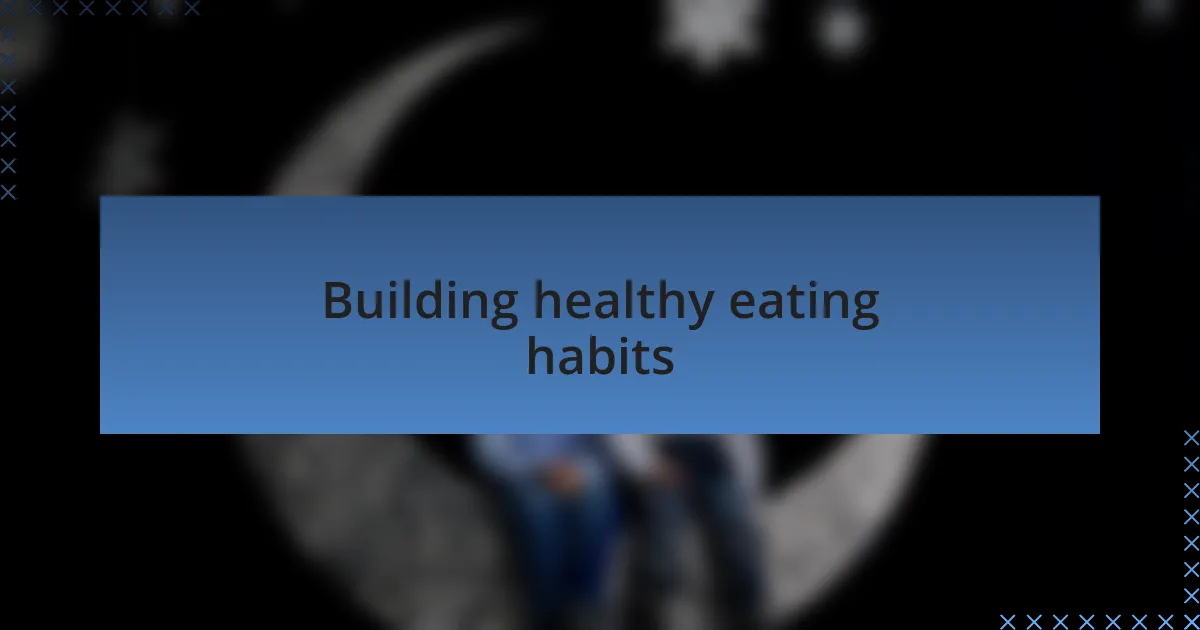
Building healthy eating habits
Building healthy eating habits requires a conscious effort to create choices that nourish both the body and the mind. I recall when I first started to swap my usual snacks for fruits and vegetables. The simple act of preparing a colorful fruit salad felt like a mindful activity—transforming my kitchen into a hub of creativity rather than just a source of comfort food. Have you ever noticed how vibrant food can lift your spirits?
Another strategy I found helpful was planning my meals ahead of time. I used to wait until I was hungry to decide what to eat, often leading to impulse choices. Now, I dedicate some time each week to craft a meal plan. It’s a preparation that feels empowering, allowing me to choose foods that support my well-being rather than succumbing to the allure of quick, unhealthy options. Do you ever find that the act of planning can change your entire outlook on eating?
Incorporating mindful eating practices has also been transformative for my journey. I remember one particularly busy lunch hour when I intentionally set aside my phone and focused solely on enjoying my meal. Taking smaller bites and savoring each flavor allowed me to appreciate food beyond its role as an emotional crutch. Have you tried really tuning into your meals? This simple shift not only made eating more enjoyable, it also helped me recognize when I was truly satisfied, breaking that cycle of mindless eating.
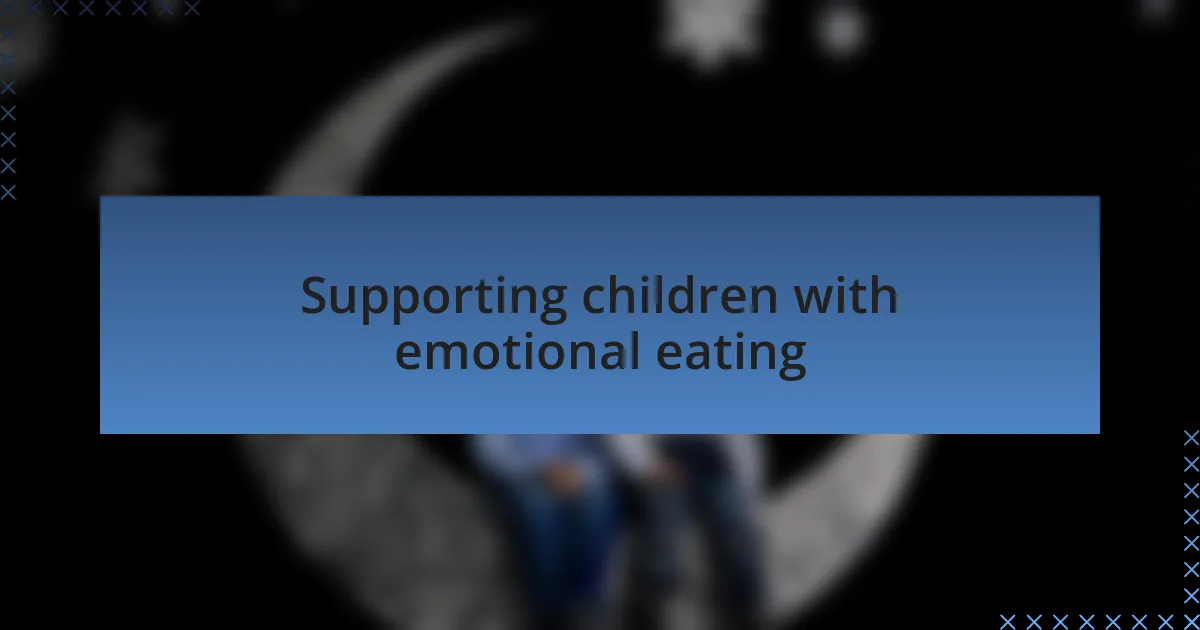
Supporting children with emotional eating
Supporting children with emotional eating begins with fostering an environment where feelings can be openly expressed. I remember my niece once sharing her worries about school, and instead of offering her snacks, I encouraged her to talk it out while we prepared a healthy treat together. This not only distracted her from the urge to eat emotionally but also built a deeper bond between us. Have you ever considered how sharing emotions over food can change the narrative around eating?
It’s essential to help children recognize the difference between physical hunger and emotional hunger. When my best friend’s daughter felt anxious before a big test, she used to gravitate toward cookies, thinking they would soothe her. I suggested she keep a journal to identify her feelings and understand her cravings. The moment she started writing about her emotions rather than eating to escape them, it was like a light bulb went off. Isn’t it incredible how simple exercises can lead to major breakthroughs?
Additionally, developing coping strategies is crucial for children struggling with emotional eating. I’ve seen my nephew transform his impulses into positive actions by practicing yoga when he feels overwhelmed. Instead of reaching for unhealthy snacks, he now rolls out his mat for some mindful movement. Have you noticed how physical activities can offer a different kind of comfort during challenging emotional moments? This shift not only promotes healthier choices but also gives kids tools they can rely on throughout their lives.